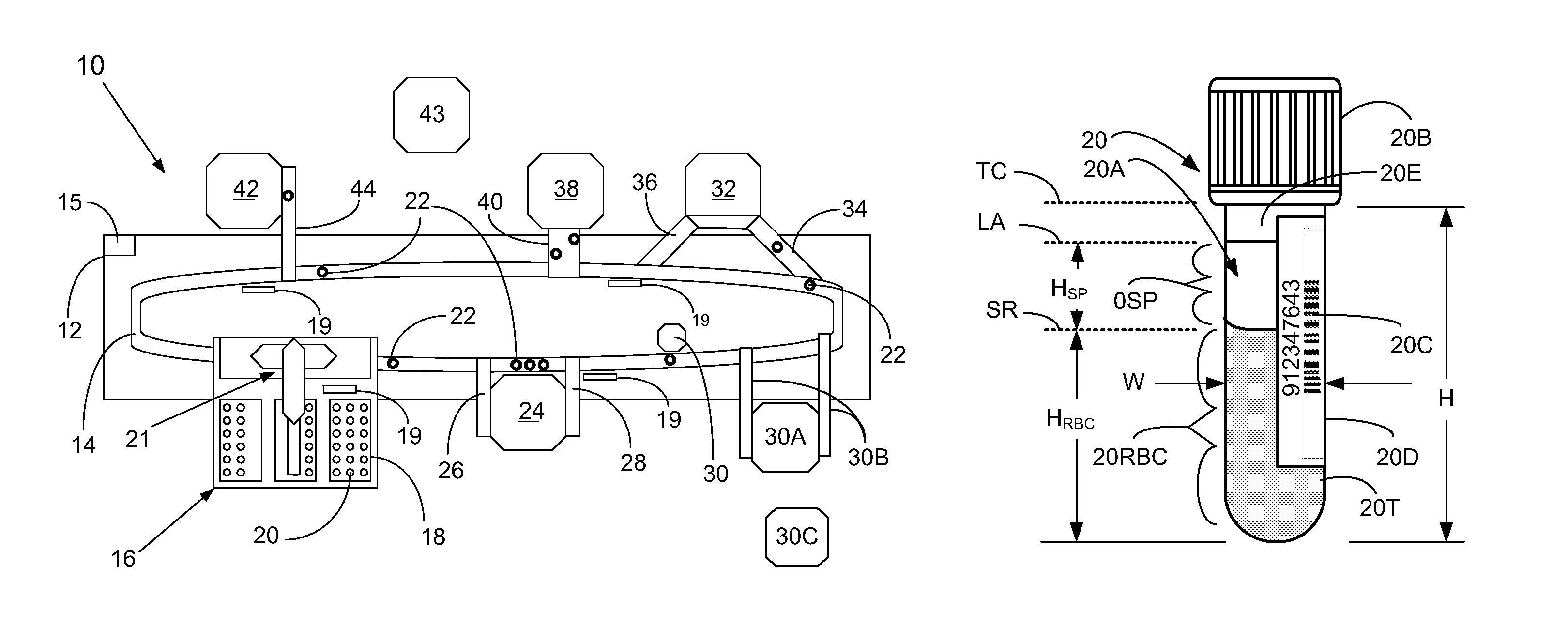Methods and apparatus for ascertaining interferents and physical dimensions in liquid samples and containers to be analyzed by a clinical analyzer
a clinical analyzer and liquid sample technology, applied in the direction of liquid/fluent solid measurement, instruments, image data processing, etc., can solve the problems of adversely affecting enzyme-based immunoassay results, interferents may arise, adversely affecting the accuracy of the results of analyte measurement obtained from the clinical analyzer
- Summary
- Abstract
- Description
- Claims
- Application Information
AI Technical Summary
Benefits of technology
Problems solved by technology
Method used
Image
Examples
Embodiment Construction
[0060]In a first broad aspect, the present invention provides methods and apparatus for determining if analytical interferents are present in a liquid specimen. The method may be carried out as a pre-analysis step prior to the liquid sample (specimen) being presented to a clinical analyzer for analytical analysis. In particular, one aspect of the present invention provides for delivering centrifuged samples for analytical analysis subsequent to being pre-inspected for a presence of an interferent like those that might be found within a blood sample. This aspect is accomplished by subjecting a liquid blood sample to an appropriate centrifugation to separate the sample into a red blood cell portion, and a blood serum or plasma portion. Subsequent to this centrifuging procedure, the blood serum or plasma portion of the sample (specimen) is tested for the presence of an interferent, such as hemolysis, icterus, and / or lipemia (hereinafter HIL) or other liquid non-uniformities therein (e....
PUM
| Property | Measurement | Unit |
|---|---|---|
| concentration | aaaaa | aaaaa |
| offset angle | aaaaa | aaaaa |
| offset angle | aaaaa | aaaaa |
Abstract
Description
Claims
Application Information
 Login to View More
Login to View More - R&D
- Intellectual Property
- Life Sciences
- Materials
- Tech Scout
- Unparalleled Data Quality
- Higher Quality Content
- 60% Fewer Hallucinations
Browse by: Latest US Patents, China's latest patents, Technical Efficacy Thesaurus, Application Domain, Technology Topic, Popular Technical Reports.
© 2025 PatSnap. All rights reserved.Legal|Privacy policy|Modern Slavery Act Transparency Statement|Sitemap|About US| Contact US: help@patsnap.com



